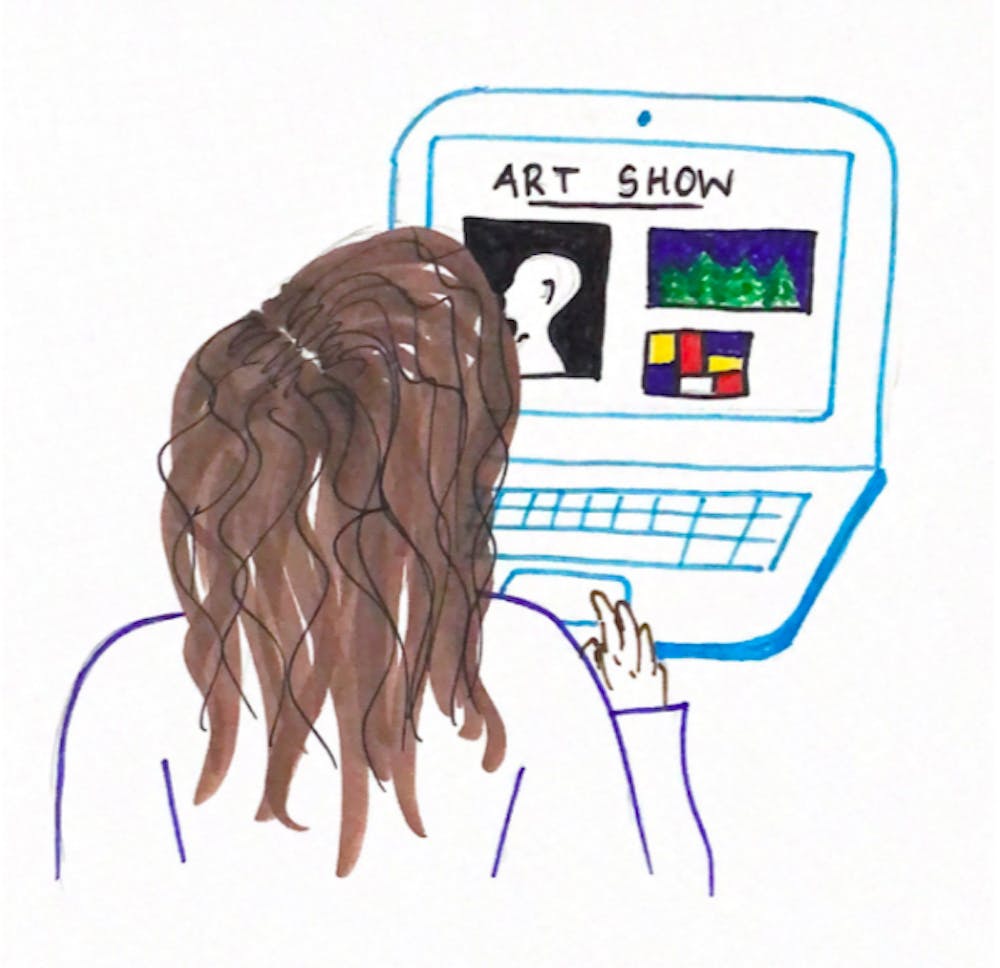For students studying remotely or taking a leave of absence, it has been challenging to find ways to engage with the arts scene at Middlebury. In addition to being away from campus, students are laden with additional burdens of navigating time zones, technical difficulties and lack of online promotion.
Studying from her home in Alaska, Ariadne Will ’22 recounted the difficulties of finding virtual events that she can attend at a reasonable time. “I think I’ve missed a lot of things because of time zone differences,” Will said.
Even for events that aren’t live and don’t require synchronized attendance, the open-ended nature of their viewing means that they run the risk of slipping through the cracks or simply getting put on the backburner.
“I’ve signed up for quite a few Hirschfield [screenings]” Will said. “They give you a few days or a whole week to watch it on your own time. But I’m really bad at doing that if I don’t do it right away. ”
For some, engagement with the arts typically goes hand in hand with social relationships, which have proven difficult to maintain with the distance the pandemic has created.
Cat McLaughlin ’21.5 is taking the semester off. She cites her friends as being an important avenue to her experience with the arts, saying, “It’s tricky because I think a lot of the ways that I connected with arts on campus were more severed by the pandemic itself than necessarily by me not being on campus. For example, I was really stoked about Hippo Campus performing for Winter Carnival because I love that band, but I didn’t know any friends who were planning to attend virtually. It felt kind of weird watching the livestream by myself, so I didn’t actually end up watching it for that long. Because so much of my experience of art is a social thing, I’d say being at home is the biggest cutoff.”
Oftentimes, it’s the virtual aspect of these events that make it difficult to find meaningful connections.
“Virtual connection doesn’t really facilitate my enjoyment of art as a multisensory experience,” McLaughlin said. “When it’s not exactly what you’re expecting, you almost don’t want to engage at all, because it won’t be quite the same. Although that’s not for a lack of trying. I do scan the arts newsletter, and you can see that [the arts department] is really trying to make it work. I don’t hold it against them, obviously. It’s just the nature of the whole thing we’re in right now.”
But this doesn’t negate the possibility of any connection at all. Last month, Will sat as a virtual audience member for “Same But Different,” a live show performed by visiting professor of dance Lida Winfield and associate professor of dance Christal Brown. Covering the performance of the show, Will was given the opportunity to talk to people in the dance department and set aside time to think and write about the production. She also attended the online premiere of the musical “CLOSE (But Not Too Close!)” and noted that an unexpected bit of entertainment came out of the event despite its digital nature.
“The comment section on Youtube Live was really cute and funny,” Will said. “It’s been interesting to watch the ways in which people want to express themselves at a performance digitally that would not happen live.”
For all the challenges of remote engagement with the arts, McLaughlin believes virtual accessibility is an important resource in which we should continue to invest. “Just because I don’t prefer to engage with art virtually doesn’t mean I don’t see value in it. I think people are going to incorporate the technological lessons we’ve learned in the last year into whatever tomorrow looks like, and I think that still finding ways to make art accessible virtually is important going forward.”
Editor’s Note: Ariadne Will ’22 is a Local Editor for The Campus.
Art at a Distance: The struggle for connection through virtual programming

Comments



